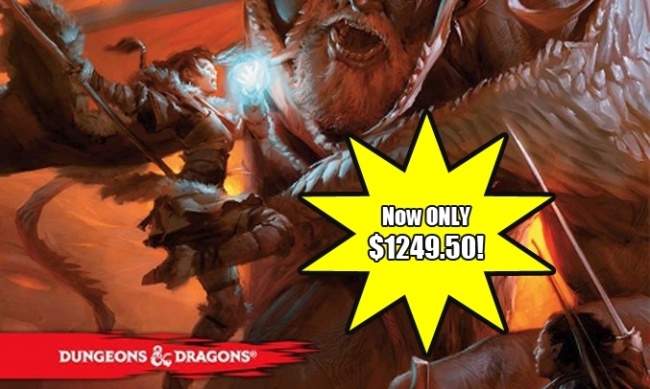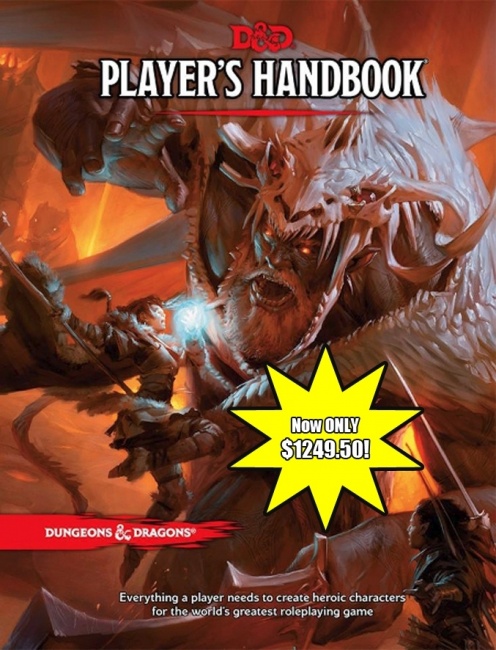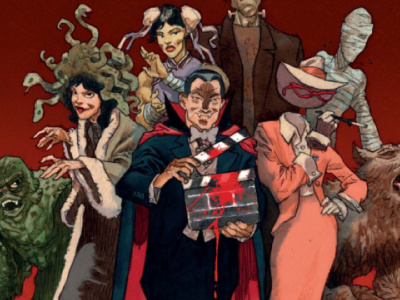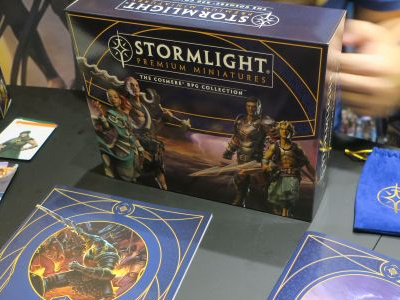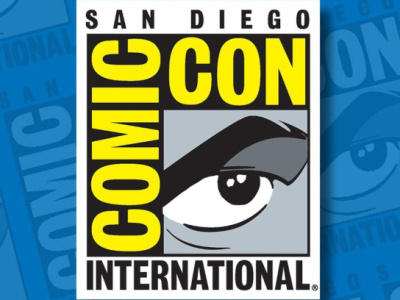Every once in awhile (okay, more than once in awhile) I have to look at pricing on Amazon and eBay for various games and wonder "What are they thinking?" I happened to be poking around on Amazon gauging prices of some out-of-print books, and found a copy of the D&D Player’s Handbook listed for $1,249.50 plus $3.99 shipping. I would happily sell anyone who wants them all they want at that price, and I'll even throw in free shipping AND insurance AND a set of dice for free. I can only assume it comes from a seller that does not actually set their prices but has some form of dynamic pricing engaged and something caused a hiccup in it. I noticed something similar with WizKids' X-Men Mutant Revolution boardgame. A collection we received last year had a copy in it and while pricing out the collection, we found someone had it listed on Amazon at over $1000. Needless to say, we priced ours substantially less.
There are three general ways to set prices: cost, demand, and competition.
Cost is easiest. Calculate your cost of materials and related expenses (payroll, insurance, utilities, etc), and add in how much profit you need to make in order to justify selling the product or service. Keystoning pricing is probably the easiest and most common way to set a price when using the cost based method. Figure your cost and overhead (the ancillary costs noted earlier), add them together, and double the total to get your price. By using the keystone method, a game manufacturer or store makes sure that all of their expenses involved in producing or purchasing the game for resale get covered with enough of a profit margin to justify manufacturing or purchasing said game. I've known some publishers who say they don't care about making a profit on their game; they just want to get their brainchild out into the market. That is fine, but that is also not a method to use to successfully run a business and hopefully they have some form of secondary income to subsidize what is essentially a hobby.
Competitive pricing. If you are using this method, that means you react to the pricing of your competitors. You can see a classic example of competitive pricing every time you drive up to an intersection with gas stations or convenience stores located at the corners. Every one of them selling gas will have their gas prices set equal to or within a couple of pennies of the others. In this situation, gas is a commodity, and the only thing differentiating the gas at one location from another is the price. In the Game Industry, we (and every other retail outlet) have seen a lot of competitive pricing thanks to Amazon and other online retailers. This is most evident in card pricing, as a lot of retailers have foregone putting pricing on single cards, opting instead to check online pricing then use the current price of cards to set the price in-store. Of course, even then you will have differentiation in pricing. We had a customer opt not to buy recently because we used one site to set single prices rather than his preferred, and cheaper, site.
Demand pricing. Similar to competitive pricing, but whereas competitive pricing drives prices down, demand pricing drives them up. As demand increases for a product, but not supply, prices go up. Many popular games (and comics) in short supply when they first release see a spike in their prices, which then flatten out as supply steadies. Gloomhaven makes this point perfectly. Short supply coupled with high demand drove prices for the game into the $300-$400 range. As supply steadied, competition drove the price back down. We have a similar supply/demand interaction currently with the Wingspan board game. Short supply coupled with high demand pushes the price up anywhere from 20% to 200%, depending on where you look. Once supply corresponds to demand, prices will settle back near MSRP.
Still do not see enough demand to justify a $1,249.50 asking price for the current D&D Player’s Handbook though.
The opinions expressed in this column are solely those of the writer, and do not necessarily reflect the views of the editorial staff of ICv2.com.



